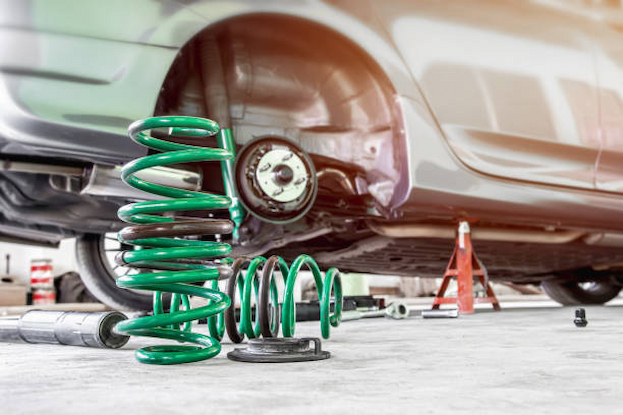Car Coilovers: An Overview of Different Types, Uses and Benefits
Coilovers are the suspension upgrades your car needs for improved handling, better cornering and the adjustability to get the most out of any road. The parts not only allow you to lift and lower the car or stiffen up the ride, but also get the most from the tires by increasing traction to all four wheels. The performance benefits and customization options shave off seconds from lap times, and give you the edge on the street.
Coilover Basics
So how do coilovers differ from conventional spring and shock assemblies? In its basic form, a car coilover is exactly what it says on the box – a coil spring over a shock absorber. The stark difference though is the ability to change ride height and increase or decrease damping performance. Moreover, this is an integrated and calibrated unit, often consisting of stiffer springs and high-performance shocks in a monotube or twin-tube design to tame spring rebound rates and keep the car glued. Assisting parts, including ride height adjusters and damping adjustment knobs allow for further changes and preferences to suit different track profiles and road surfaces. Working together, the parts offer more control, improved steering and better braking – key parameters for a faster and a car that’s undeniably more fun to drive.
Choosing the Right Type
Coilovers improve overall performance and handling in a variety of vehicles. They can be categorized by purpose into:
- Street coilovers – designed for daily driving, balancing overall comfort and performance and providing basic ride height and damping adjustability.
- Track – optimized for racing and high-performance track use. They have stiffer spring rates for more steering control ,more aggressive damping and ride height settings and increased and incremental adjustments for improved cornering, braking and acceleration.
- 4×4 coilovers – for ride height adjustability and improved off-road stability in SUVs and 4WD vehicles, with stiffer, long travel spring rates and compression changes in the shocks for improved ride comfort.

Based on adjustability, a car coilover can be:
- Ride-height adjustable – allows changes to vehicle ride height by changing the compression rates in the spring seats, or the top and bottom mounts holding the springs in place.
- Shock-adjustable – allows changes to damping and rebound rates in the shocks, and customizing ride quality for comfort or performance.
The parts can also be single-way adjustable, for both compression and rebound; two-way adjustable (changing compression and rebound rates independently) and four-way adjustable with the highest degree of adjustability and customization. According to designs, specifically of the shocks, a coilover can also be of a monotube or twin-tube type. Monotubes have a single, larger chamber filled with hydraulic liquid or gas, ensuring better heat dissipation, more responsive damping and reduced bounce that aids stability and control at higher speeds. Twin-tube are less costly, consist of an inner tube filled with hydraulic liquid and and outer chamber for gas, and primed more for comfort and consistent street performance.
Why Have Coilovers on Your Car?
Coilovers still remain tuning favorites, despite the simplicity and performance potential of newer suspension layouts like air suspension. Here’s a detailed breakdown of why coilovers reign the suspension market:
- Improved handling – the variety of customization, including tuning springs and shocks for height, stiffness, and rebound rates with incremental changes increases on-road manners, control and stability. Cars are more responsive, there’s more feedback through the steering wheel, and less body roll in corners, reduced diving in hard braking and no rear-axle squat in hard acceleration. With the car glued to the road, tires also get more traction.
- Customization options – customize vehicles for specific tasks and road surfaces. Changes to ride height for instance modify the vehicle’s center of gravity for a more relaxed ride, with longer travel in the springs. Alternately, stiffening the springs, and reducing ride height when also changing shock parameters like rebound and damping rates tunes vehicles for high speed stability. This can be done within minutes, using basic tools.
- Enhanced comfort – while the parts are more about performance, coilovers still outperform stock springs and shocks for overall ride quality and comfort, especially on bad roads. This can also be changed and dialed in to suit specific road conditions. Moreover, twin-shock types work with springs to level out any road imperfections to deliver max comfort.
- Durability – throwing cars around a track, or belting through street corners at high speed puts tremendous stress on the suspension. Factory setups won’t last long before springs start to sag and shocks bottom out. The better build in aftermarket coilovers, with calibrated springs and shocks for the vehicle, ensure all-round durability and parts that last no matter where or how you drive. Yes, a full front and rear axle set can get pricey, but the increased stability, better grip, reduced body roll, and improved control more than make up for it. Choose parts from established suspension brands and have coilovers installed by a professional to reap all the rewards.




